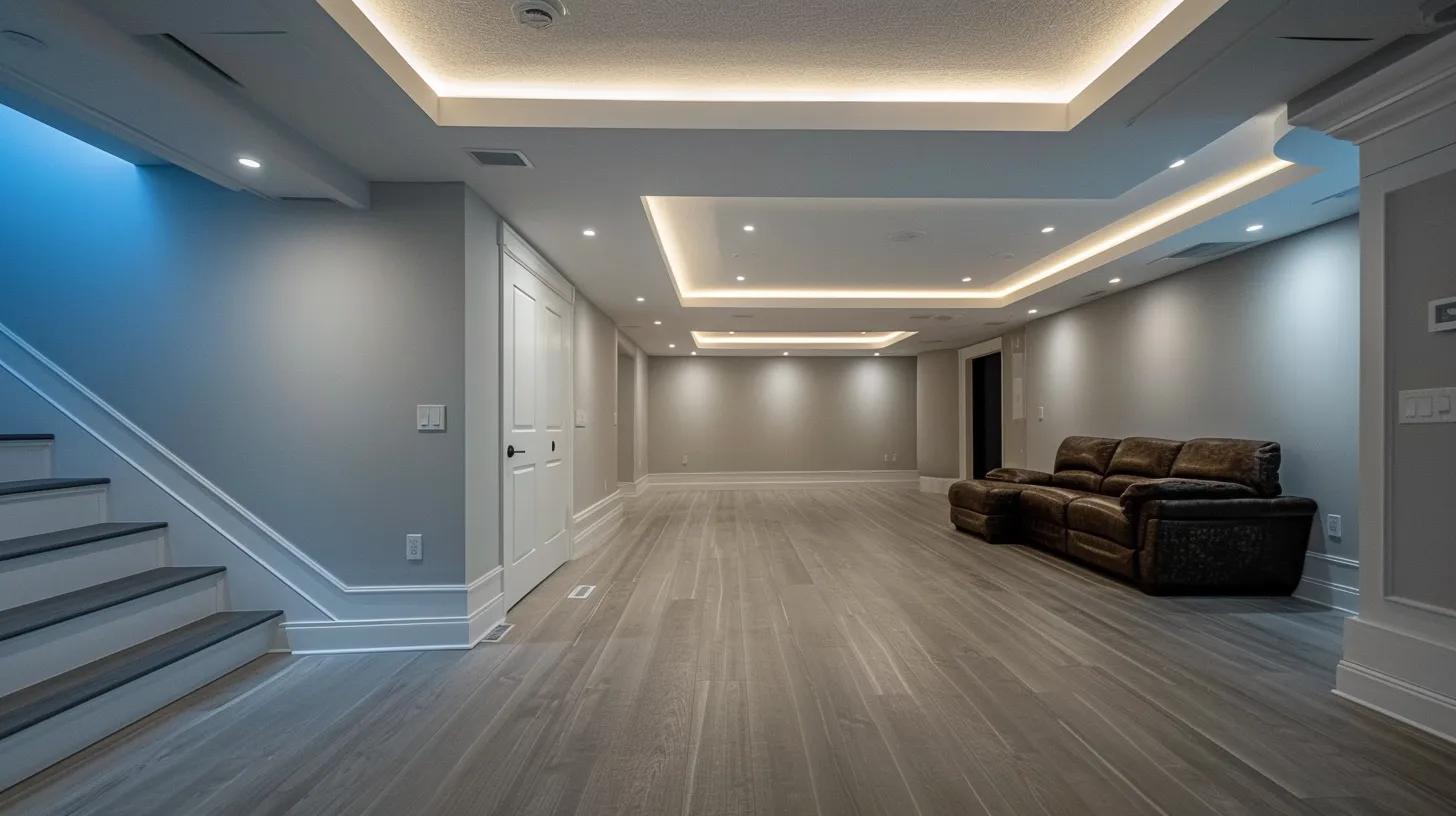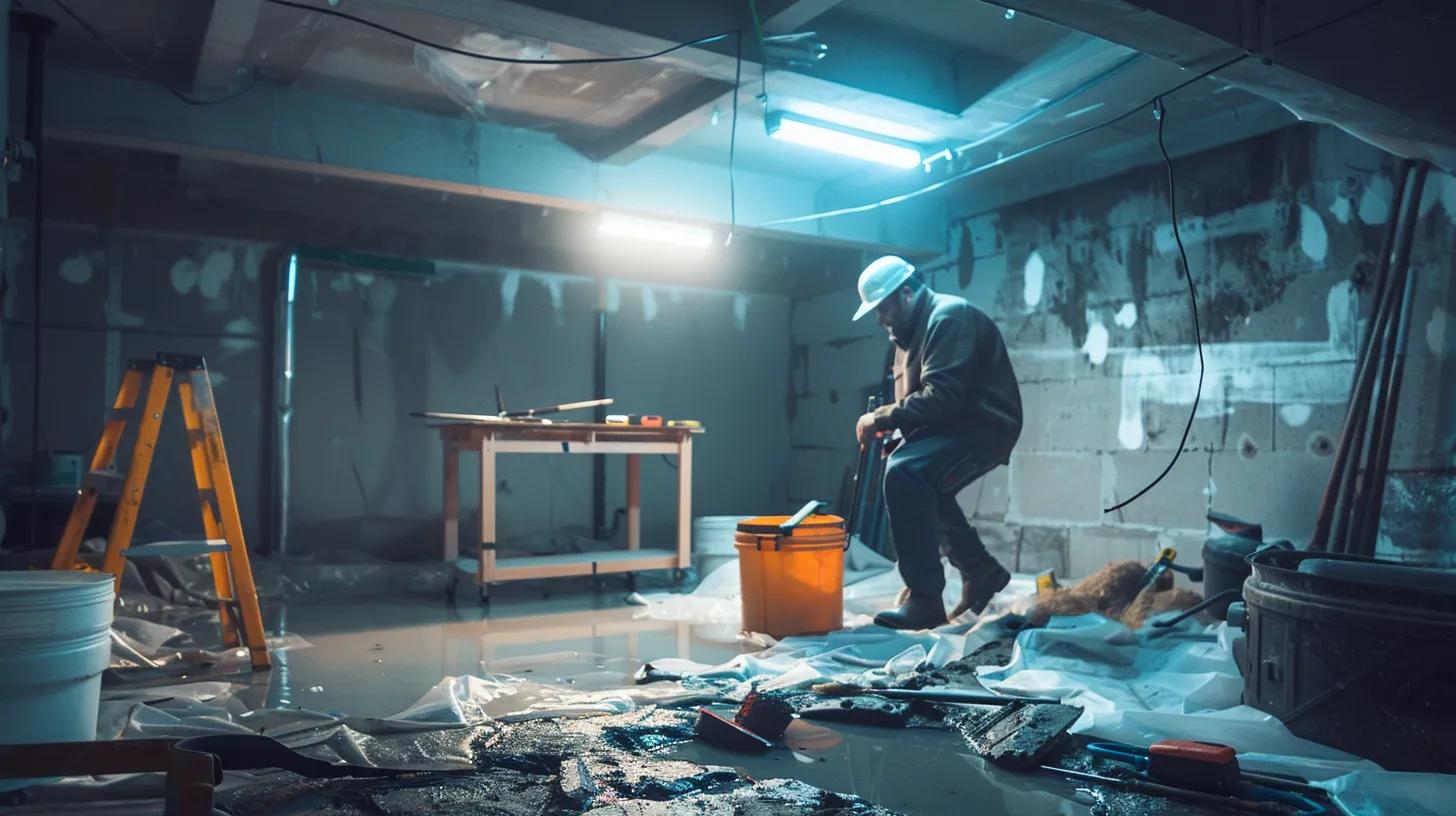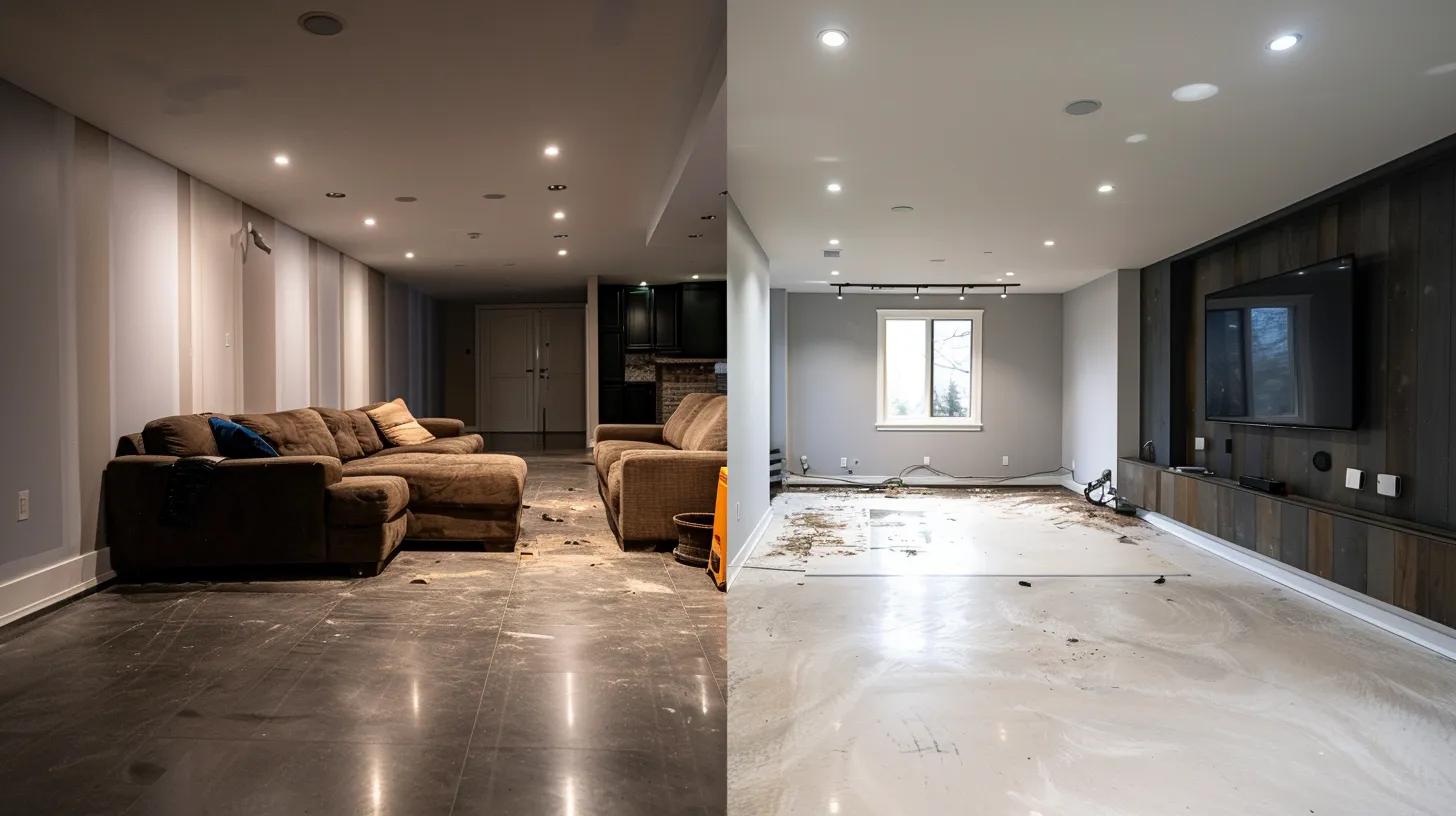Basement Waterproofing Techniques vs Traditional Methods
In our experience at Mayim Basement Waterproofing, homeowners and commercial property owners in St. Louis face serious issues with water intrusion and moisture in basements. Over time, water infiltration can lead to foundation cracks, structural damage, compromised indoor air quality, and safety hazards. In this article, we compare modern basement waterproofing techniques with traditional methods. We explain common causes and warning signs of basement water problems, outline interior and exterior waterproofing benefits, and discuss factors that affect cost and execution.Our goal is to equip you with expert advice and actionable solutions so you can choose the method best suited to your basement conditions while ensuring long-term sustainability and efficiency of your property’s waterproofing system.
Our company has over 20 years of experience addressing basement waterproofing St. Louis concerns. We understand that a wet basement not only jeopardizes structural integrity but also poses health risks such as mold development. Our guide offers detailed explanations, tables, and bullet lists to help you understand the environmental benefits and technical aspects of waterproofing. By combining modern materials with time-tested practices, we develop tailored solutions that guarantee enhanced durability and protection against water damage.
What Are the Common Causes and Signs of Basement Water Problems?
Basement water problems arise from several interconnected factors. Understanding these causes is critical for effective evaluation and remediation. Poor drainage around the perimeter—including inadequate landscaping or gutter systems that fail to divert water—leads to increased hydrostatic pressure on basement walls and floors. Additionally, cracks in the foundation or poorly sealed joints create channels for water intrusion during heavy rains or flooding.
What Causes Water Intrusion in Basements?
Our inspections reveal several root causes:
- Poor Grading and Drainage: Soil slopes improperly, directing water toward the foundation, often worsened by clogged gutters.
- Foundation Cracks and Structural Deficiencies: Aging foundations develop cracks that allow moisture seepage.
- High Water Table: In areas with high groundwater, pressure from below forces moisture upward.
- Plumbing Leaks and Condensation: Internal sources, such as leaking pipes or condensation, can mimic external water flow.
We use moisture meters and thermal imaging to pinpoint the source, ensuring targeted intervention and repair cost reduction.
How Can You Identify Signs of Water Damage in Your Basement?
Watch for these warning signs:
- Visible Water Stains and Efflorescence: Discoloration on walls or floors and mineral deposits indicate moisture exposure.
- Mold Growth and Musty Odor: Persistent dampness encourages mold growth, which damages materials and affects respiratory health.
- Cracks in Walls and Floors: Small fissures that expand over time signal structural concerns.
- Peeling Paint or Bubbling Wallpaper: Damp conditions compromise interior finishes.
Monitoring these signs early can significantly lower repair costs and prevent further deterioration.
Why Is Mold a Serious Concern in Wet Basements?
Mold not only degrades structural materials like wood but also harms indoor air quality, leading to allergies and respiratory ailments. Moisture control is a health imperative, and by addressing mold quickly with professionalbasement waterproofing St. Louis solutions, we mitigate long-term health risks and preserve property integrity.
What Are the Key Interior Waterproofing Techniques and Their Benefits?

Modern interior waterproofing has transformed basement protection. These methods are typically used when exterior basement waterproofing is impractical or cost-prohibitive. Interior solutions create a protective barrier for the basement, reducing moisture damage risk.
How Does Sump Pump Installation Protect Your Basement?
We strongly recommend sump pump installation as it removes accumulated water efficiently. Sump pumps, activated by water level sensors, mitigate flooding during heavy rainfall or snowmelt and lower basement humidity to help prevent mold. Backup batteries or generators further ensure continuous operation, maintaining a dry, safe basement environment.
What Are the Best Methods for Foundation Crack Repair?
Repairing foundation cracks is crucial to prevent water seepage. We use methods such as epoxy injections, which chemically bond and seal cracks, and polyurethane foam that expands to fill cavities. Epoxy provides a rigid repair while polyurethane remains flexible under temperature variations. Our team carefully assesses each situation to recommend the best solution for preserving structural integrity.
How Do Interior Drainage Systems Work to Prevent Water Damage?
Interior drainage systems consist of channels and perforated pipes along the basement perimeter. They collect water that penetrates walls and direct it toward a sump pump for removal. This system not only minimizes water accumulation but also lowers hydrostatic pressure on walls. Combined with vapor barriers and dehumidifiers, interior drainage prolongs your basement’s lifespan and enhances indoor air quality.
How Do Exterior Waterproofing Methods Compare to Interior Techniques?
Exterior waterproofing protects the foundation from the outside by preventing water from reaching interior spaces. This method involves applying a waterproof membrane to the exterior foundation wall and installing drainage systems that divert water away. Exterior approaches address the root cause rather than just the symptoms of water intrusion.
What Is Exterior Waterproofing Membrane Application and Its Advantages?
We use specialized liquid or sheet membranes on exterior walls to form a continuous barrier:
- Complete Isolation: The membrane prevents direct water contact with the foundation.
- Durability: High-quality membranes resist UV exposure, chemical degradation, and physical wear. Enhanced Protection: Minimizing moisture exposure helps prevent long-term deterioration.
Combined with proper backfill and drainage, exterior waterproofing offers lasting protection that can reduce future repair costs.
How Does Drain Tile Installation Help Keep Basements Dry?
Drain tile systems, orfrench drains, involve installing a perforated pipe in a trench around the foundation. This installation reduces external water pressure by actively redirecting water away from the structure. Drain tiles are particularly effective in areas with heavy rainfall or poor soil drainage and complement waterproof membranes by creating an integrated water management solution.
When Is Foundation Repair Necessary in Exterior Waterproofing?
Foundation repair is essential when structural damage or extensive cracking is evident. When traditional methods fail, foundation issues such as settling or shifting foundations can intensify moisture problems. Repairs may include underpinning, wall anchors, or concrete injections. Timely intervention not only stops water intrusion but also maintains overall structural performance and property value.
Choosing Interior vs Exterior Basement Waterproofing

Choosing between interior and exterior waterproofing depends on your basement’s condition, moist4ure severity, and foundation integrity. Both methods have their advantages and trade-offs; often, a combination yields the best results. We work closely with clients to assess needs and recommend personalized solutions.
What Are the Pros and Cons of Interior Waterproofing?
Pros:
- Ease of Installation: Less invasive, no extensive excavation.
- Cost-Effectiveness: Generally more affordable with immediate moisture reduction. Cons:
- Limited Coverage: Addresses symptoms rather than the source.
- Aesthetic Impact: May require adjustments to the finished look.
- Maintenance Needs: Regular inspections and upkeep for sump pumps a4nd drainage.
What Are the Pros and Cons of Exterior Waterproofing?
Pros:
- Comprehensive Protection: Prevents water from reaching the foundation.
- Enhanced Structural Integrity: Reduces hydrostatic pressure.
- Lower Long-Term Maintenance: Once installed, requires less frequent upkeep. Cons:
- Higher Initial Costs: Extensive excavation and materials increase price.
- Disruption: Installation is invasive and may require significant property access.
- Retroactive Challenges: Not always feasible for existing structures without disruption.
How Do Basement Conditions Influence the Choice of Waterproofing Method?
Basement conditions such as high humidity, mold presence, foundation cracks, or water seepage directly influence the optimal approach. We assess basement geometry, soil conditions, water table levels, and existing damage. Often, combining interior and exterior measures provides complete protection and peace of mind.
What Factors Affect the Cost of Basement Waterproofing Techniques?
Cost is a major concern for homeowners and property managers. The price of waterproofing projects varies based on several factors and our comprehensive assessments ensure transparent pricing tailored to your property.
How Do Interior and Exterior Waterproofing Costs Compare?
Interior waterproofing tends to be more economical due to less labor and simpler installations like sump pumps and drainage channels. However, while these methods offer immediate moisture relief, they do not prevent water contact with the foundation, sometimes leading to higher maintenance costs later. Exterior waterproofing is more expensive initially due to excavation and membrane application but addresses the water intrusion source more permanently.
What Other Factors Influence Basement Waterproofing Prices?
Additional factors include:
- Foundation Condition: Older homes with cracks may require extensive repairs.
- Property Size and Layout: Larger or complex basements increase labor and material costs.
- Location and Environment: Local soil, water table, and climate affect material and method choices.
- Material Quality and Warranty: Premium materials come at a higher cost but offer durability.
- Access and Disruption: Difficult access can drive up installation costs.
Are There Financing Options Available for Waterproofing Services?
We offer flexible financing options, including installment plans and low-interest loans, to ensure that necessary waterproofing projects remain accessible. Our goal is to safeguard your property without causing undue financial strain.
Should You Choose DIY Basement Waterproofing or Hire a Professional?

DIY waterproofing might seem appealing for its upfront cost savings, but improper techniques often lead to recurring problems that cost more over time. Professional expertise ensures accurate moisture assessment, proper sealing, and long-term prevention, safeguarding your home’s structural integrity.
What Are the Pros and Cons of DIY Basement Waterproofing?
When considering DIY basement waterproofing solutions, we recognize that there are notable pros and cons that can significantly impact the outcome of your project. On the positive side, opting for do-it-yourself methods can lead to cost savings since you avoid the high fees associated with hiring professionals. Additionally, some minor issues in our basements can be effectively addressed using over-the-counter products, providing quick fixes that seem convenient. However, we must also be aware of the disadvantages. The lack of expertise can often result in incorrect diagnosis, meaning that our DIY solutions may ultimately be ineffective. Furthermore, improper installation due to insufficient tools or skills can lead to failures, resulting in higher costs down the line when inadequate work necessitates expensive repairs. Balancing these factors is crucial as we decide how to tackle basement waterproofing.
Why Is Hiring a Professional Waterproofing Contractor Recommended?
When it comes to basement waterproofing St. Louis,hiring a professional waterproofing contractor is highly recommended for several key reasons. Our team brings expertise and advanced tools to accurately diagnose hidden issues that may not be immediately visible, ensuring that all underlying problems are addressed effectively. Additionally, we use high-quality materials and techniques that come with warranties, providing you with peace of mind and a guarantee of quality assurance. By offering integrated systems that combine both interior and exterior solutions, we provide comprehensive protection against water damage. Our expertise significantly reduces long-term risks, safeguarding your investment and minimizing the chances of recurring issues in the future.
What Are the Most Frequently Asked Questions About Basement Waterproofing?
Below are some common questions and our expert answers based on years of experience.
How Long Does Basement Waterproofing Last?
High-quality systems, whether interior or exterior, typically last between 10 to 20 years with proper maintenance. Regular inspections are key to ensuring durable performance.
What Is the Best Basement Waterproofing Method for Severe Water Intrusion?
For severe cases, we recommend a dual approach that combines exterior waterproofing membranes with interior drainage systems and a sump pump. This integrated method effectively manages heavy water pressure.
How Can You Prevent Mold Growth After Waterproofing?
Maintaining proper ventilation and humidity levels with dehumidifiers is crucial after waterproofing. Our systems are designed to reduce moisture levels significantly, lowering the risk of mold growth.
Can Basement Waterproofing Increase Home Value?
Yes, a dry and well-maintained basement is highly attractive to buyers and can significantly enhance your home’s market value by preventing extensive future damage.
Is Basement Waterproofing Environmentally Friendly?
Modern methods, particularly those using polyurethane and epoxy sealants, are designed with sustainability in mind. They minimize waste, reduce chemical runoff, and improve energy efficiency during installation.
Frequently Asked Questions
Q: What maintenance is required for basement waterproofing systems? A: Regular inspections every 1-2 years, cleaning around sump pumps, and ensuring proper drainage help maintain efficiency. Addressing minor issues promptly prevents further damage.
Q: How does waterproofing impact indoor air quality? A: By reducing moisture, waterproofing limits mold and mildew growth, thereby improving indoor air quality and reducing respiratory health risks.
Q: Can waterproofing help with energy efficiency? A: Yes, a dry basement minimizes heat loss through damp walls and floors, contributing to overall energy savings.
Q: Are warranties offered on professional waterproofing installations? A: Most installations come with warranties ranging from 5 to 20 years, ensuring long-term protection and reliability.
Q: How quickly can waterproofing be installed once issues are diagnosed? A: Depending on the work required, installations typically take a few days to a week, with project management minimizing disruption.
Q: What is the average cost difference between interior and exterior waterproofing? A: Interior methods are generally less costly due to simpler installation processes, while exterior methods, although more expensive upfront, provide a more permanent solution.
Q: Is financing available for large waterproofing projects? A: Yes, we offer flexible financing plans to make comprehensive waterproofing solutions accessible while minimizing financial strain.
We have explored various basement waterproofing St. Louis methods and traditional techniques, highlighting their advantages and limitations. Our analysis shows that while interior solutions likesump pump installation and drainage systems provide quick, cost-effective fixes, exterior methods offer comprehensive, long-lasting protection by addressing the source of water intrusion. By understanding your basement’s specific conditions and needs, you can choose a method that ensures long-term durability and improved indoor air quality. At Mayim Basement Waterproofing, we are dedicated to providing personalized, expert solutions that safeguard your property, enhance sustainability, and boost your home’s value. We encourage homeowners to conduct regular evaluations and invest inprofessional waterproofing to ensure lasting protection against water damage.
